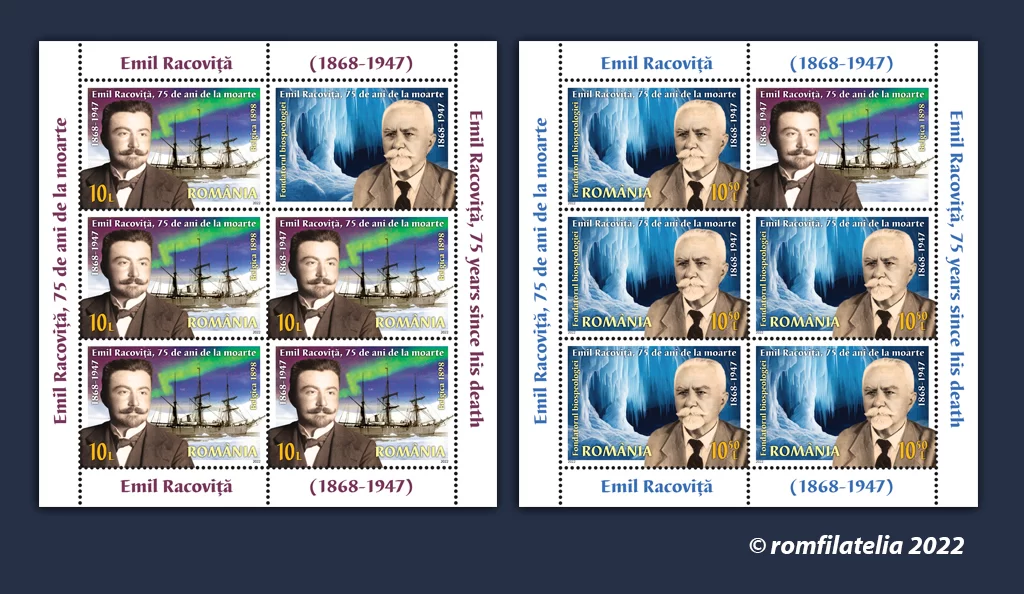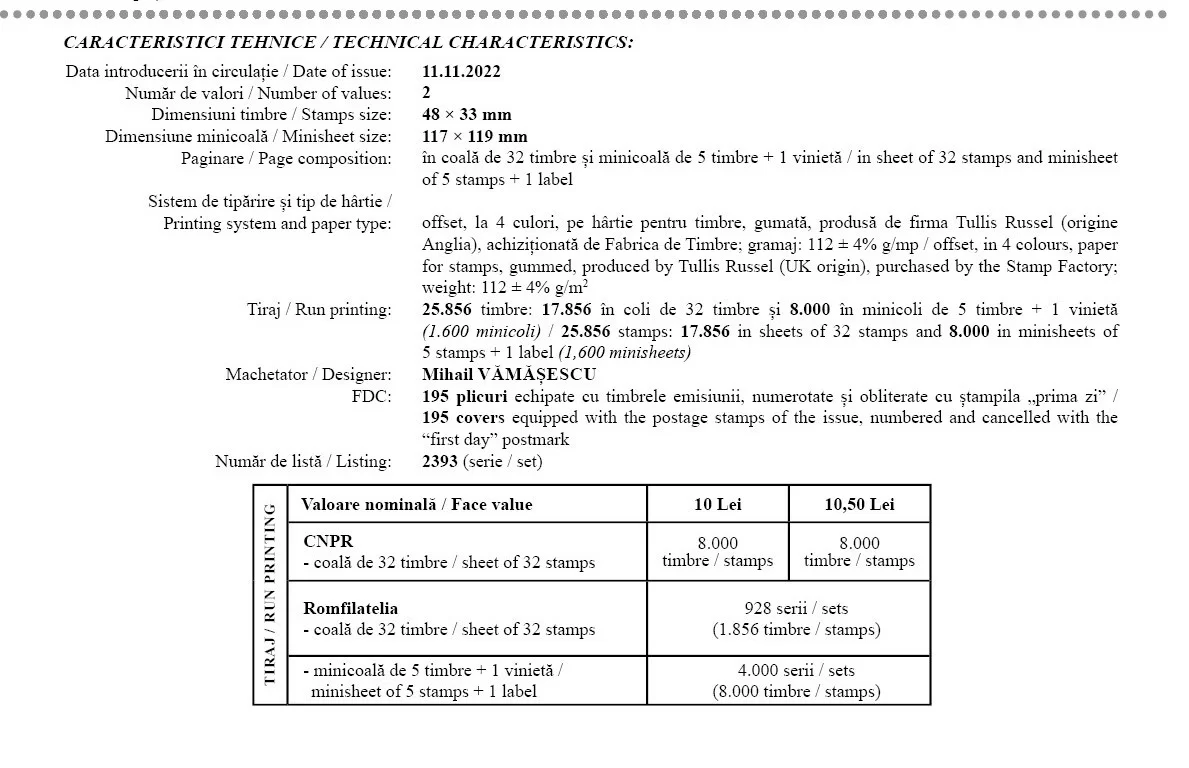 On the 75th anniversary of the death of the great Romanian scientist of worldwide recognition, Emil Racoviță, the founder of biospeleology, Romfilatelia dedicates to him a postage stamps issue that will be introduced into circulation on Friday, November 11 this year.
On the 75th anniversary of the death of the great Romanian scientist of worldwide recognition, Emil Racoviță, the founder of biospeleology, Romfilatelia dedicates to him a postage stamps issue that will be introduced into circulation on Friday, November 11 this year.
The issue entitled Emil Racoviță, 75 years since his death, consists of two stamps and a First Day Cover.
The Romanian speleologist and biologist Emil Racoviță was born in Iaşi, on the 15th of November 1868. His passion for the natural sciences was aroused by the professor Grigore Cobãlcescu, during he studied at the “United Institutes” high school of Iaşi. Fulfilling at first his father’s wish, Emil Racoviță followed the Law Faculty of Paris, which he gave up in favour of the vocation he was destined for. Thus, the young Racoviță graduated the Sciences Faculty of Sorbonne, having the famous scientist Henri de Lacaze-Duthiers as Zoology professor.
In 1896, Racoviță became famous among the European scientists, obtaining the doctor title, with a remarkable piece of work (Le lobe céphalique et l’encéphale des anélides polychètes – Paris).
During the period 1897-1899 that he spent together with Amundsen aboard the “Belgica” ship, within the Belgian Antarctic Expedition, Racoviță gathered 1600 zoological and botanical specimens. This collection allowed him to publish, on his return, an important work on cetaceans. On the 1st of November 1900, he became deputy manager of the “Arago” Oceanological Laboratory of Banyuls-sur-Mer, France, founded 20 years before. In 1904, Racoviță made a crucial discovery, which was going to influence the rest of his life. The new species of crustaceans, found in the Cueva del Drach cave of Mallorca, fascinated him to such an extent that he would give up to the oceanological research in order to dedicate himself to the underground ecosystems. The publication of his work “Essay on biospeleological problems”, in 1907, marked the birth of biospeleology, which he defined as the science of life forms from the underground environment (caves and underground waters).
In 1920, he returns to Romania to found, in Cluj, the first Speleological Institute of the world, where he remained director until 1947. One of his important work is “Speleology”, published in 1927.
Emil Racoviță was also President of the Romanian Academy (1926-1929), and later, between 1929 and 1930, he was appointed Rector of the Cluj University, where he taught the first course of general speleology of Romania. The work “Evolution and its problems”, published in 1929, approaches in a very original way the evolutionist theory, developing a phylogenetic and systematic perspective on the evolution of underground animals. By closely pursuing his aim to understand the natural history of the underground environment, he obtained remarkable results due to his biospeleology program: he explored 1200 caves in Europe and Africa, he gathered a collection of 5000 underground animals, and published over 66 works on the underground fauna, totaling almost 6000 pages.
The scientist Emil Racoviță died in 1947, at the age of 79, before reorganizing the Cluj Institute. Great lover of nature, Emil Racoviță is one of the initiators of the protection of natural monuments of Romania.
On the stamp of the issue with the face value of Lei 10, the portrait of the scientist at the age of adulthood is illustrated in the foreground, and on the background the ship of the Belgica Expedition, anchored between the shores of Antarctica.
On the stamp with the value of Lei 10.50, the portrait of the scientist Emil Racoviță at the age of senescence is reproduced, and in the background a image specific to caves.
Romfilatelia thanks the Romanian Academy Library, the “Grigore Antipa” National Museum of Natural History and the “Emil Racoviță” Institute of Speleology in Bucharest, for the documentary and photographic support granted for the development of this postage stamps issue.



